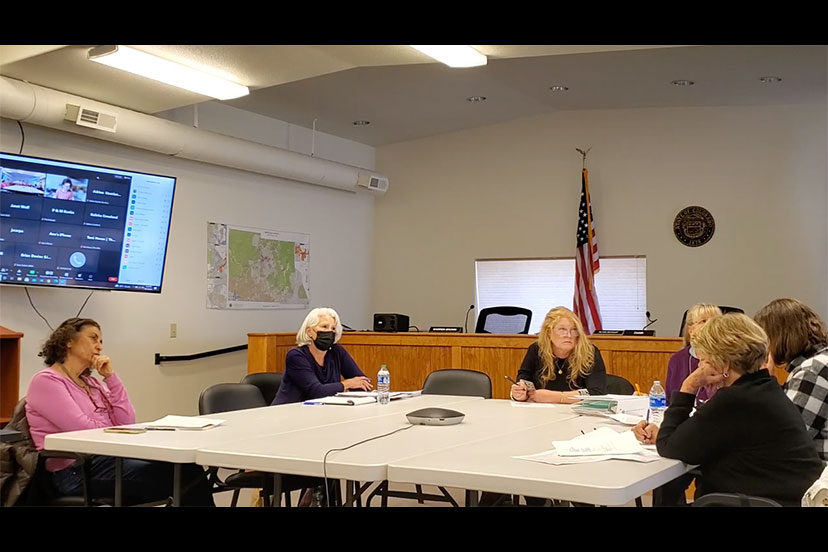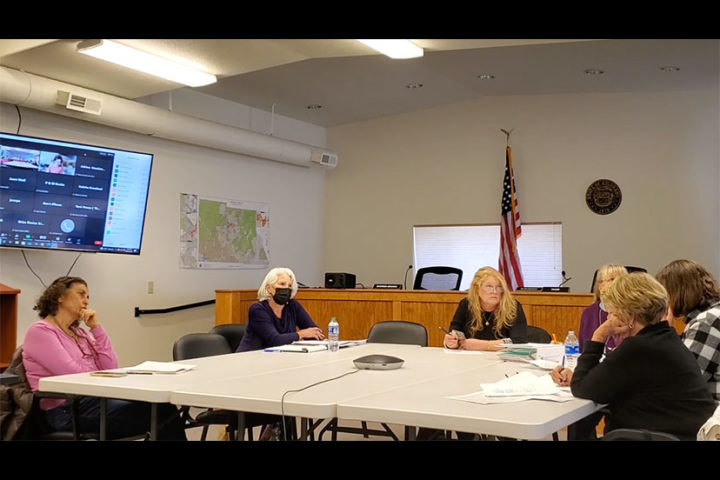Perhaps in order to be better represented as a community, we need to demand more from those representing our county on the SJBPH board, because we feel there is great value in Archuleta County staying with SJBPH.
— from an editorial by Pagosa Springs SUN editor Terri Lynn Oldham House titled “Stick with San Juan Basin Public Health, but insist on doing better”, November 3, 2021.
When I attended a meeting of the Archuleta County Health District Investigative Committee (HDIC) on October 26, I heard the committee members sharing their research into how various public health districts in operate in rural Colorado counties. It sounded like they were running into difficulty getting information from some of those rural health districts.
I’m sure we don’t want to blame those districts for any apparent lack of communication. We are, after all, in the midst of a serious public health crisis… and also in the midst of The Great Resignation, with practically every Colorado organization and business struggling to find or retain employees, and probably short-staffed. Helping Archuleta County investigate a possible divorce from its existing health district is probably not everyone’s top priority right at the moment.
The HDIC did, meanwhile, receive a considerable amount of information from our own public health district — San Juan Basin Public Health — on October 13, when they met with SJBPH Board of Health President Ann Bruzzese, Board Vice President Karin Daniels, and SJBPH Executive Director Liane Jollon via Zoom. A great deal of detailed information was shared during the 2-hour conversation, with the investigative commission and with the dozen members of the public who attended.
If you want to listen to the entire 2-hour meeting, it was posted to YouTube by local video producers UnitedForFreedom.us
From a story by reporter Clayton Chaney published in the Pagosa Springs SUN:
Bruzzese also provided some statistics in regard to the district’s response to COVID-19. She noted that SJBPH is currently providing testing four times a week at Pagosa Springs Medical Center and that 25 percent of the district’s community outreach in regard to the pandemic has been done in Archuleta County. Additionally, she noted that approximately 20 percent of communicable disease investigations occur in Archuleta County.
Bruzzese also noted that 20 percent of the district’s sexual health clinics and cancer screenings are performed in the county. She mentioned that immunizations are currently offered twice a month in Archuleta County, and that there is no waiting list for any of the services the district provides…
Ms. Bruzzese also referred to SJBPH’s work on environmental health, and noted that 25 percent of the district’s field staff who perform inspections are in Archuleta County.
We don’t want to neglect that particular remark, because “environmental health” and “performing inspections” might actually be at the center of this controversy.
As was mentioned earlier in this editorial series, my family bought our first home in downtown Pagosa in 1993, for $52,000. Back in those days, it was almost impossible to find a good-paying job in Pagosa, unless you worked for the government. (Something that didn’t appeal to me at the time.) And even a government job wasn’t going to make you rich.
A well-worn joke from those days.
Q: How do you leave Pagosa Springs with a million dollars?
A: Come here with two million.
Some things have barely changed.
But other things have. Back in 1993, when homes and vacant land were still relatively affordable, a family could get by on a couple of $12 per hour jobs. (Or three jobs, or four.) Also, back then we didn’t have a Tourism Board spending $1 million a year subsidizing the tourism industry. The entire budget for the Town of Pagosa Springs was barely $1 million.
The cost of a septic system has also changed. Living downtown, we were hooked up to the Town sewer system, but the folks who were building their homes in the more rural areas of the county — in Aspen Springs, for example — were putting in septic systems. The cost depended, in part, upon the type of soil on your property, and how well it “perked”.
“Percolation” being the amount of time required to allow wastewater to pass through the soil.
Back in the 1990s, it cost one particular homeowner in Aspen Springs about $8,500, for a septic system in reportedly difficult clay soils. Or so I’ve been told.
In 2021, due to regulatory changes at the state level and also due, perhaps, to policy changes at San Juan Basin Public Health (SJBPH), a septic system in that same neighborhood will cost you $20,000 – $30,000. Or so I’ve been told.
I had a pleasant conversation yesterday with a gentleman who has worked in the construction industry here since the 1990s. He noted that our local construction workers are earning perhaps $50,000 a year — a decent enough wage in this little town.
Enough to buy a house in Pagosa, right? When a new “starter home” costs $300,000?
According to the Colorado Housing and Finance Authority, a person with an annual income of $50,000 can afford a mortgage for a home costing about $180,000.
If you want to buy a new house in Pagosa Springs on a $50,000 salary, you had better be married to someone who also earns $50,000.
So, we want to consider ways to bring down housing costs. Can Archuleta County reduce the cost of a septic system, for example? Because — generally speaking — the most affordable vacant land is typically located in the least developed, most ‘rural’ parts of of Archuleta County. If we make it more feasible, and more affordable, to build your home in rural neighborhoods… could this help us address the current housing crisis?
One idea that has been mentioned by the Archuleta Board of County Commissioners, to bypass the high cost of engineered septic systems, is the creation of a “standard design” for each type of soil found in Archuleta County, and to provide that “standard design” to prospective home builders, allowing them to skip the cost of a custom-engineered system. When I visited the Colorado Department of Public Health and Environment and downloaded Regulation 43 — the rules currently specifying the need for a professional engineer’s design when installing certain ‘on-site wastewater treatment systems’ — it would appear that many, but not all, soil types require the involvement of a professional engineer.
You can download Regulation 43 here.
I reached out, two days ago, to the SJBPH Environmental Public Health office for clarification of Regulation 43, and have not yet heard back.
Perhaps the Health District Investigative Committee would have more luck, hearing back from SJBPH?



